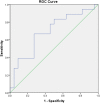Patients with adolescent idiopathic scoliosis perceive positive improvements regardless of change in the Cobb angle - Results from a randomized controlled trial comparing a 6-month Schroth intervention added to standard care and standard care alone. SOSORT 2018 Award winner
- PMID: 31286903
- PMCID: PMC6615154
- DOI: 10.1186/s12891-019-2695-9
Patients with adolescent idiopathic scoliosis perceive positive improvements regardless of change in the Cobb angle - Results from a randomized controlled trial comparing a 6-month Schroth intervention added to standard care and standard care alone. SOSORT 2018 Award winner
Abstract
Background: The Cobb angle is proposed as the "disease process" outcome for scoliosis research because therapies aim to correct or stop curve progression. While the Scoliosis Research Society recommends the Cobb angle as the primary outcome, the Society on Scoliosis Orthopaedic and Rehabilitation Treatment prioritises, as a general goal, patient related outcomes over Cobb angle progression.
Objective: To determine the threshold of change in the Cobb angle in adolescents with idiopathic scoliosis (AIS) who perceive improvement in a 6-months randomized controlled trial comparing a Schroth exercise intervention added to the standard of care to the standard of care alone.
Methods: This is a secondary analysis of data from a randomized controlled trial of 50 patients with AIS, with curves ranging from 10° to 45°, with or without a brace. Participants with diagnoses other than AIS, surgical candidates or patients who had scoliosis surgery were excluded. The 6-month interventions consisted of Schroth exercises added to standard-of-care (observation or bracing) with daily home exercises and weekly therapy sessions (Schroth) or standard-of-care alone (Control). The anchor method for estimating the minimal important difference (MID) in the largest Cobb angles (LC) was used. Patient-reported change in back status over the 6-month treatment period was measured using the Global Rating of Change (GRC) scale as anchor varying from - 7 ("great deal worse") to + 7 ("great deal better"). Participants were divided into two groups based on GRC scores: Improved (GRC ≥2) or Stable/Not Improved (GRC ≤1). MID was defined as the change in the LC that most accurately predicted the GRC classification as per the receiver operating characteristic curve (ROC).
Results: The average age was 13.4 ± 1.6 years and the average LC was 28.5 ± 8.8 °s. The average GRC in the control group was - 0.1 ± 1.6, compared to + 4.4 ± 2.2 in the Schroth group. The correlation between LC and GRC was adequate (r = - 0.34, p < 0.05). The MID for the LC was 1.0 °. The area under the ROC was 0.69 (0.52-0.86), suggesting a 70% chance to properly classify a patient as perceiving No Improvement/Stable or Improvement based on the change in the LC.
Conclusion: Patients undergoing Schroth treatment perceived improved status of their backs even if the Cobb angle did not improve beyond the conventionally accepted threshold of 5°. Standard of care aims to slow/stop progression while Schroth exercises aim to improve postural balance, signs and symptoms of scoliosis. Given the very small MID, perceived improvement in back status is likely due to something other than the Cobb angle. This study warrants investigating alternatives to the Cobb angle that might be more relevant to patients.
Trial registration: ClinicalTrials.gov , NCT01610908 . Retrospectively registered on April 2, 2012 (first posted on June 4, 2012 - https://clinicaltrials.gov/ct2/keydates/NCT01610908 ).
Keywords: Cobb angle; Exercise; Minimal important difference (MID); Physiotherapeutic scoliosis specific exercises; Receiver operating characteristics curve; Schroth; Scoliosis; Spinal curvatures.
Conflict of interest statement
SS owns a private clinic providing Schroth exercises that opened after completing the data collection for this research. In addition, SS is an International Schroth 3D Scoliosis Therapy (ISST) Schroth Instructor.
The authors declare that they have no other competing interests.
Figures
References
-
- Negrini S, Aulisa AG, Aulisa L, Circo AB, de Mauroy JC, Durmala J, Grivas TB, Knott P, Kotwicki T, Maruyama T, Minozzi S, O'Brien JP, Papadopoulos D, Rigo M, Rivard CH, Romano M, Wynne JH, Villagrasa M, Weiss H-R, Zaina F. 2011 SOSORT guidelines: Orthopaedic and Rehabilitation treatment of idiopathic scoliosis during growth. Scoliosis. 2012;7:3. doi: 10.1186/1748-7161-7-3. - DOI - PMC - PubMed
-
- Negrini S, Donzelli S, Aulisa AG, Czaprowski D, Schreiber S, de Mauroy JC, Diers H, Grivas TB, Knott P, Kotwicki T, Lebel A, Marti C, Maruyama T, O'Brien J, Price N, Parent E, Rigo M, Romano M, Stikeleather L, Wynne J, Zaina F. 2016 SOSORT guidelines: orthopaedic and rehabilitation treatment of idiopathic scoliosis during growth. Scoliosis Spinal Disord. 2018;13:3. doi: 10.1186/s13013-017-0145-8. - DOI - PMC - PubMed
Publication types
MeSH terms
Associated data
LinkOut - more resources
Full Text Sources
Medical
Miscellaneous


